Fixed network planning
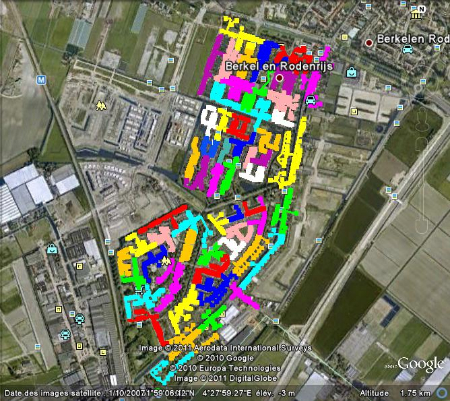
Optimized design of FTTx networks
Major telecommunications network operators and municipalities are facing the pressure of deciding how to invest into FTTx networks. Many options have to be assessed and weighed against each other. There are just too many things to take into account:
- What is the right architecture?
- What are the major cost-drivers?
- Where are technological limitations?
- How to find the optimal number of central offices?
- How to optimally design the distribution networks?
- How to minimize digging using an existing duct and cable infrastructure?
Using atesio's automatic planning and optimization algorithms an incredible reduction of planning time can be achieved and an accurate assessment of network cost can be computed. This means, decision makers can establish a sound information basis since it is possible to compute - in short time - alternative designs which weigh all important design parameters and constraints.
atesio's clients rely on detailed quantitative studies. Starting from their existing infrastructure, their individual cost structure, their traffic forecasts, alternative network evolution paths are developed and benchmarked. Put your trust into proven services and obtain amazing insights on how much getting it right matters. This might have major impact on your balance sheet.
atesio is partner in the BMBF-funded consortium FTTX-PLAN and provides the core optimization functionality for ESRI's Fast@Home .
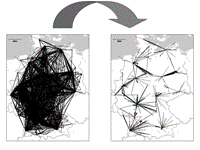
Optimized layout of a future-proof NGN
Numerous network operators are currently (planning to) migrating to an All-IP platform which facilitates to provide services in a particularly flexible and cost-efficient way. But it's not all that easy!
How many IP-routers are needed in the core network? Where should these routers be located? How should the (Ethernet-)aggregation areas be designed? Getting the answers to these questions right is crucial in the design of a robust and future-proof network.
atesio's clients rely on detailed quantitative studies. Starting from their existing infrastructure, their individual cost structure, their traffic forecasts, alternative network evolution paths are developed and benchmarked. Put your trust into proven services and obtain amazing insights on how much getting it right matters. This might have major impact on your balance sheet.
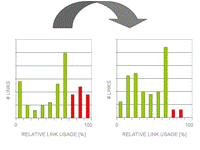
Multi-layer routing optimization in transport networks
Network operators often face the situation that the average usage of their SDH-network hardly exceeds 30-40 percent. Nevertheless, the network requires regular upgrades since some links create bottlenecks that must be resolved! Investments are one option, of course. Performing a thorough routing review and clearing out the history of network evolution can often achieve a comparable impact - at lower cost.
Thus, knowing how to avoid investments by improving the utilization of the existing network can be quite an asset. If you only knew how to balance investments and "network clear out" in order to most effectively maintain a future-proof, but low-cost network! That's where you may want to use atesio's professional services to achieve this goal within a few weeks time.
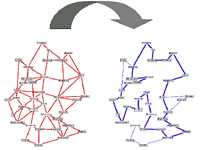
Optimized configuration of communication networks
atesio provides the optimization engine DISCNET, a powerful set of models and algorithms to design and configure communication networks. DISCNET is based on state-of-the-art and award-winning mathematics. It is successfully used in practice for more than 10 years and enables atesio to minimize the total network cost, to optimize the quality of service, or to minimize the reconfiguration effort.
DISCNET provides technology that optimizes the cost of circuit-switched transmission networks. It supports the planner to decide the topology, to configure the hardware at the network locations (add-drop-multiplexers, cross-connects and interface cards), to dimension the link capacities, and to protect the network against failures. The run-time quality-assessment reveals that DISCNET-switch computes high-quality and cost-effective transmission networks.
DISCNET provides technology that improves the traffic engineering and performs cost-optimization of IP-networks. Crucial to the operation of an IP network is the computation of routing weights (OSPF, IS-IS, etc.) which appropriately balance the load among the links of the network. DISCNET-ip optimizes the routing weights to provide cost- or load-effective network configurations.
DISCNET provides technology that reduces the cost of a leasedline infrastructure. Given the operational network including the configuration of the end-to-end routing of communication requirements, DISCNET-leasedline computes a reconfiguration while providing at least the same operability which enables the operator to shutdown one or more leasedlines.
Identifying potential timing cycles in synchronization networks
The synchronization network is the clock-pulse generator of today's SDH networks. Only if all network elements send and receive data based on synchronized clock information, the network will work properly. In order to retain the correct status in failure situations many network operators work with prioritized clock information. If the primary path of the the clock-pulse information to a network element fails, a secondary path should deliver this information.
The big issue: it is easy to generate timing-cycles in failure situations but it is very hard to detect them, since the failure of a single physical link might induce multi-link-failures in the synchronization network.
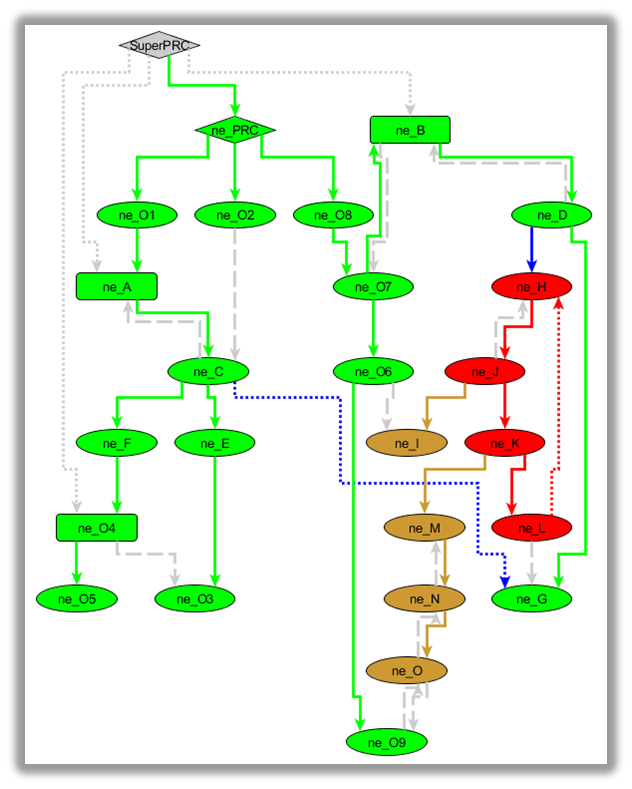
With atesio-sync-analyzer it is possible to
- identify timing cycles in arbitrary failure situations,
- identify unreachable network elements, and
- identify violation of ITU parameter specifications (G.811, G.812, G.813)
already during the planning stage. The benefits are clear:
- prevent network collapse caused by timing cycles,
- reduced planning times,
- improved network quality,
- master highly complex configuration task.
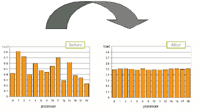
Optimized configuration of Signaling Transfer Points
The signaling network (SS7) is the nervous system of most switched telecommunication networks, and it is vital to the operation of the telecommunication network itself. The robustness of the signaling network can be boosted by balancing the signaling load across the processors of each signaling transfer point (STP). The backup capacity increases without investments in new hardware. atesio's STP configurator enables the planner to achieve an almost perfect balance with a minimum number of changes and - at the same time - it reduces the planning time.
atesio is currently participating in the industry-driven European research programme SASER (Safe and Secure European Routing) and the EU-founded project DISCUS.
Radio network planning
Self-Management for Unified Heterogeneous Radio Access Networks

The EU-funded FP7 SEMAFOUR project (Self-Management for Unified Heterogeneous Radio Access Networks) will design and develop a unified self-management system, which enables the network operators to holistically manage and operate their complex heterogeneous mobile networks. The ultimate goal is to create a management system that enables an enhanced quality of user experience, improved network performance, improved manageability, and reduced operational costs.
In order to assess the achievable improvements in terms of network performance and manageability, the developed solutions will be evaluated through extensive simulation experiments and visualised by a demonstration system.
atesio is carrying out this project in collaboration with NSN, Ericsson, iMinds, Orange, Telefonica, TNO, TU Braunschweig.
Enhancing energy efficiency of cellular networks

ICT energy consumption is a growing concern. With an expected exponential growth in data transport, the communications infrastructure alone may soon become one of the largest energy consumers in the world. Modern energy efficient equipment is a first important answer, but better equipment alone will not suffice to successfully fight exploding energy demand. Its smarter use, exploiting inherent, yet not fully explored intelligence in the networks shall further improve energy efficiency.
atesio is collaborating with the SMEs DATAX, BENCO and the research institutions Fraunhofer Heinrich-Hertz-Institute, TU Braunschweig and University of Wroclaw in
the EU-funded FP7 GreenNets project with the goal of devising
methods to reduce energy consumption for cellular radio networks.
Corresponding tools are being developed within the project and shall
assist operators in enhancing energy efficiency of their current and
future network deployments.
Self-Optimisation and Self-Configuration in Wireless Networks

Future communication networks will exhibit a significant degree of self-organisation. The principal objective of introducing self-organisation, comprising self-optimisation, self-configuration and self-healing, is to effectuate substantial operational expenditure (OPEX) reductions by diminishing human involvement in network operational tasks, while optimising network efficiency and service quality.
atesio collaborated with TNO, Ericsson, IBBT, TU Braunschweig and Vodafone in
the EU-funded FP7 SOCRATES project (Self-Optimisation and self-ConfiguRATion in wirelEss networkS) for the development of self-organisation methods to enhance the operations of wireless access networks, by integrating network planning, configuration and optimisation into a single, mostly automated process requiring minimal manual intervention.
Integrated planning and optimizing (W)CDMA networks
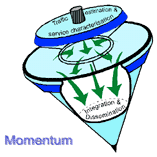
Deploying and optimizing UMTS networks is a tremendous challenge, which
numerous network operators around the world are facing. UMTS networks have to
meet consumers' high expectations under tight budget constraints. The careful
dimensioning of the radio access infrastructure plays an essential role in
achieving these goals.
Major players of system manufacturers, network operators, service providers,
and operations research facilities joined forces in the EU-funded MOMENTUM
project. Among others, the consortium aimed at the development of advanced
automatic UMTS planning tools. atesio played a significant role within this
consortium, building on its extensive know-how for the development of
state-of-the-art optimisation kernels. Extremely powerful planning and
optimization methods are now available to atesio's customers.
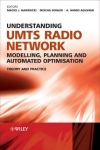
The book on "Understanding UMTS Radio Network Modelling, Planning and Automated Optimisation: Theory and Practice", published by Wiley in April 2006, contains several contributions from atesio on network modelling and automatic network optimisation. These contributions highlight atesio's outstanding know-how in the field.
Location Area Planning
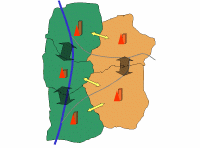
Location areas in a GSM network allow a trade-off between paging traffic on the one hand and location update traffic on the other hand. Both types of traffic consume scarce radio resources, and minimizing the one is typically at the expense of increasing the other. atesio offers a software to design location areas as to minimize the location update traffic while keeping the paging traffic at an acceptable level.
Simulation of GPRS traffic
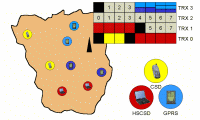
The introduction of HSCSD and GPRS into a GSM network added a new dimension to the task of planning the capacity of the cells. The traditional voice and data services in GSM are circuit-switched and of unit demand for the down- and the uplink. While HSCSD services are still circuit-switched, more than one timeslot per TDMA cycle may be used and the down- and the uplink demands need not be identical. GPRS is a packet-oriented service for bursty, unsymmetric communication demands. Simulation is the common way to assess the capacity of a base station configuration with respect to specific traffic profiles. atesio has developed a simulator to solve that task.